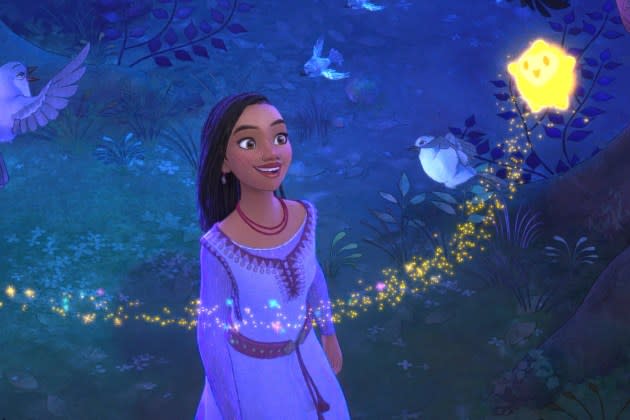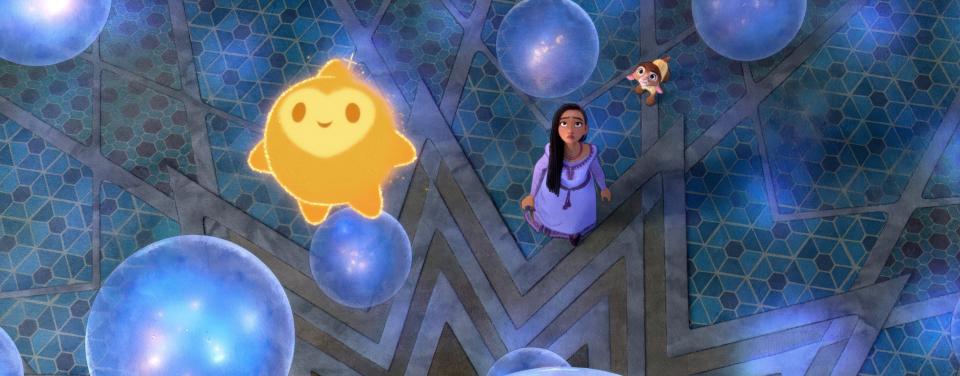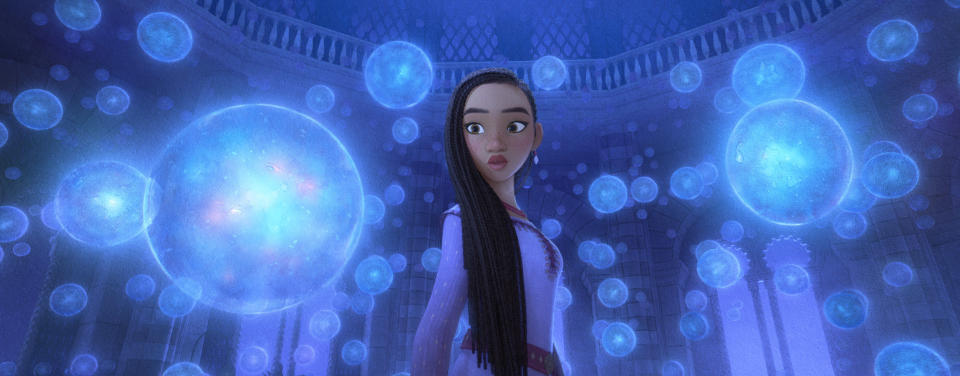‘Wish’ Writer-EP Jennifer Lee On Celebrating 100 Years of Disney & Bringing The “Heart Of The Artists” Into The Style Of Animation

For Disney’s 100th anniversary, writer-EP Jennifer Lee was tasked with creating an original fairytale that celebrated the legacy of Disney animated films. After finding a common theme in wishing upon a star, Wish was born as a way to dissect the power and vulnerability of the concept.
Wish follows Asha (Ariana DeBose), a young girl who disagrees with how the kingdom’s ruler Magnifico (Chris Pine) treats the wishes of her fellow citizens. She wishes upon a star for change, but is surprised when that star comes down from the sky to answer her call. While Star was originally a character with a voice, Lee says the simpler version of Star led to a much more fun character with physical humor.
More from Deadline
Hayao Miyazaki's 'The Boy And The Heron' Soars To $2M+ Previews, Eyes $10M+ Opening - Box Office
'Coyote Vs. Acme': Paramount Circling; Amazon Still Possible Contender - The Dish
2023-24 Awards Season Calendar - Dates For Oscars, Emmys, Grammys, Tonys, Guilds & More

DEADLINE: How did you arrive at that animation style? It’s very storybook-like.
JENNIFER LEE: In many ways we talked about nods to the past that we loved – particularly Sleeping Beauty, Cinderella, Snow White – and wanting to pay homage to that. But deeper than that, we were really thinking about what animation can do to connect you to the artist, and embracing the new technologies that we have. But how can we bridge them? How can we really say that there’s no degree of separation from that brushstroke-artist vision to the technology we have today?
I loved that, in Wish, we were able to break it down so we could still move the camera incredibly. We could have layers to our environments, depth to our characters, depth to the lighting and all these wonderful things CG does, but we could also go right back to the heart of the artists that are foundational to everything we do here.
DEADLINE: How did that character of Star come about? I know it went through a lot of different iterations.
LEE: It did. The simple start was literally, ‘What if you wish upon a star and the star answers?,’ which is such a delicious idea. In the beginning, Star came down and could take different forms and had a voice and could talk. I really had a lot of fun with the dialogue, but it really made Star the lead character in many ways, but that’s not how it works. What is Star really about?
When you wish upon a star, the star reflects back the sense of hope, possibility, wonder, imagination and gives you courage. So, how do you embody that in a character? And we just let it be that light, but didn’t give the answers or the lead. We always say to have a wish, and know there’ll be helpers out there and on those dark days, look to that light. So, I think taking Star and then imbuing them with those ideas made Star simpler and simpler in design, but so much more fun because Star doesn’t have to be limited by language, which was really just one of my favorite discoveries.

DEADLINE: Can you talk about developing the character of Asha, voiced by Ariana DeBose?
LEE: [Songwriter] Julia Michaels was very inspiring with “This Wish”, which she wrote very early on. It’s the idea of that time in your life as a teenager on the precipice of adulthood, where you can finally see the world for not necessarily its best, but also the things that need to be better. And there’s a line in the song, “I’m young, but I’m not wrong,” about having the courage to say, “I want a better world. I want better for our people.” And that’s something we all connect to in that time of our lives. So, having a character who dares to wish for more and then be challenged to be the one to make that more happen. From the start, that felt like such a wonderful character arc to me, but also getting to really lock her into that time on the precipice of her adult life, which I think was really driven by Julia’s incredible song.
DEADLINE: Can you talk about the character arc of Magnifico, voiced by Chris Pine? He definitely thought himself a hero, not a villain.
LEE: We really wanted to have fun with a villain, and we’d done a lot of thematic villains or surprise villains in the last decade. We wanted to celebrate the traditional villain but recognize that audiences are still evolving, so what could we do differently? As we would talk in the story room, we all really wanted to understand why he would make these choices. Where is he at his best? What drove him? What kind of childhood did he have? Chris Pine was really great about understanding all his motivations of course, but also really challenged us and asked why the character would the do that. As we unlocked more and more of him, we really discovered what drove him and brought it back to his own wish as a child and that journey.
I really saw the complexity, and my favorite part about that is realizing we open the film with a storybook with Magnifico as the first page – not the protagonist, but the would be villain – at his greatest truth. And you have Asha, Magnifico and even Queen Amaya [Angelique Cabral] aligned in their philosophies and understanding the fragility of a wish at the beginning of the film. And then, with each discovery and each moment that they are threatened, you see them make different choices. I think that’s what made Magnifico so fun, because you got to walk through each one of those choices that he makes that leads him to his own situation.
Best of Deadline
2023 Premiere Dates For New & Returning Series On Broadcast, Cable & Streaming
Danielle Brooks To Receive Palm Springs Film Festival's Spotlight Award, Actress
Sign up for Deadline's Newsletter. For the latest news, follow us on Facebook, Twitter, and Instagram.

